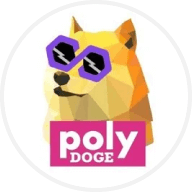Появление Эфириума произвело революцию на криптовалютном рынке, проложив путь для развития децентрализованных приложений (dApps). DappRadar (RADAR) - это платформа, призванная предложить ценные сведения о мире dApps. Благодаря предоставлению всесторонних данных и аналитики, DappRadar стремится повысить прозрачность и дать пользователям возможность ориентироваться в быстро развивающемся ландшафте децентрализованных приложений.
Что такое DappRadar
DappRadar - это платформа на основе блокчейна, которая предлагает точные и своевременные данные и статистику рынка dApp. С миссией борьбы с недостоверной информацией, DappRadar предлагает пользователям надежный и всеобъемлющий сайт агрегации рыночных данных.
Данные о DApp, предоставляемые на DappRadar, представлены в виде рейтингов и портфелей, в зависимости от типа и характера dApp. Платформа также предоставляет информацию о невзаимозаменяемых токенах (NFT) и более широком рынке децентрализованных финансов (DeFi).
Команда DappRadar
DappRadar был основан Скирмантасом Янушкасом и Драгосом Дуникой, которые занимают должности генерального директора и директора по контролю качества соответственно. Проект, основанный на блокчейне, также имеет опытного эксперта по криптовалютам и блокчейну Патрика Бариле (операционный директор) в составе команды основателей. DappRadar поддерживают некоторые из ведущих венчурных фирм в отрасли, такие как Blockchain Ventures, Nordic Ninja и Prosus Ventures.
Как работает DappRadar
DappRadar работает через удобный веб-сайт, который прост в навигации и совершенно бесплатен в использовании. Его доступность позиционирует его как незаменимый инструмент для трейдеров, желающих получить более глубокое представление о развивающемся рынке dApp. Благодаря своей глобальной направленности и децентрализованной природе, приложение DappRadar дает множество преимуществ своим пользователям.
Одним из ключевых преимуществ DappRadar является его гибкость. Пользователи имеют возможность легко и безопасно отслеживать более 3,000 dApps на широком спектре блокчейнов. Кроме того, платформа предлагает функцию отслеживания портфеля, которая позволяет пользователям отслеживать ежедневные прибыли, убытки и общий вид своих активов.
Нативный токен DappRadar: RADAR
Запущенный в 2021 году, RADAR является нативным токеном проекта. Он был разработан для предоставления пользователям доступа ко всем интересным функциям платформы. RADAR также служит токеном вознаграждения, который пропорционально распределяется между членами сообщества за их вклад в развитие платформы.
Кроме того, RADAR является основой для экосистемы децентрализованной автономной организации (DAO) DappRadar, выступая в качестве управляющего токена.
Токеномика RADAR
Общее количество токенов RADAR составляет 10 миллиардов, они привязаны к стандарту ERC-20 на блокчейне Эфириума. Цель RADAR - способствовать вовлечению сообщества и создавать стимулы для активного участия, обеспечивая энергичную и устойчивую экосистему для всех заинтересованных сторон.
Как делать стейкинг RADAR
Стейкинг является важным аспектом экосистемы DappRadar. Он позволяет держателям токенов получать определенные вознаграждения за блокировку средств на определенный период. Вы можете делать стейкинг RADAR как обычный участник или как PRO участник, что означает, что у вас есть возможность внести минимум 5,000 и 30,000 RADAR соответственно.
Чтобы начать, посетите сайт DappRadar. Перейдите на вкладку "Стейкинг" и выберите предпочтительный вариант участия. Подключите свой кошелек к сети, выберите сумму RADAR, которую нужно застейкировать, и завершите процесс. После завершения процесса вы сможете начать зарабатывать вознаграждения как участник DappRadar.
Варианты использования RADAR
RADAR предоставляет держателям доступ к функциям платформы, служит в качестве оплаты за транзакции, позволяет разработчикам создавать приложения и предоставляет право голоса в экосистеме.
Распределение RADAR
RADAR распределяется следующим образом:
- 40 процентов было выделено лояльным участникам сообщества.
- 25.25 процента было отложено для команды и акционеров DappRadar.
- 24.75 процента пошли в казну DappRadar, которая покрывает расходы на развитие, сбор средств, партнерство и маркетинг.
- 10 процентов было распределено во время первого эирдропа.
Будущее DappRadar
DappRadar стремится обеспечить устойчивость своей платформы, последовательно предоставляя ценные и точные рыночные показатели разработчикам, пользователям и заинтересованным лицам на развивающемся рынке dApps. Предоставляя глубокие выводы, графики, статистику и данные, DappRadar стремится быть надежным и достоверным источником информации. Платформа также стремится постоянно адаптироваться к тенденциям рынка и совершенствовать свои услуги, обеспечивая свою актуальность и полезность в долгосрочной перспективе.


















Социальные сети